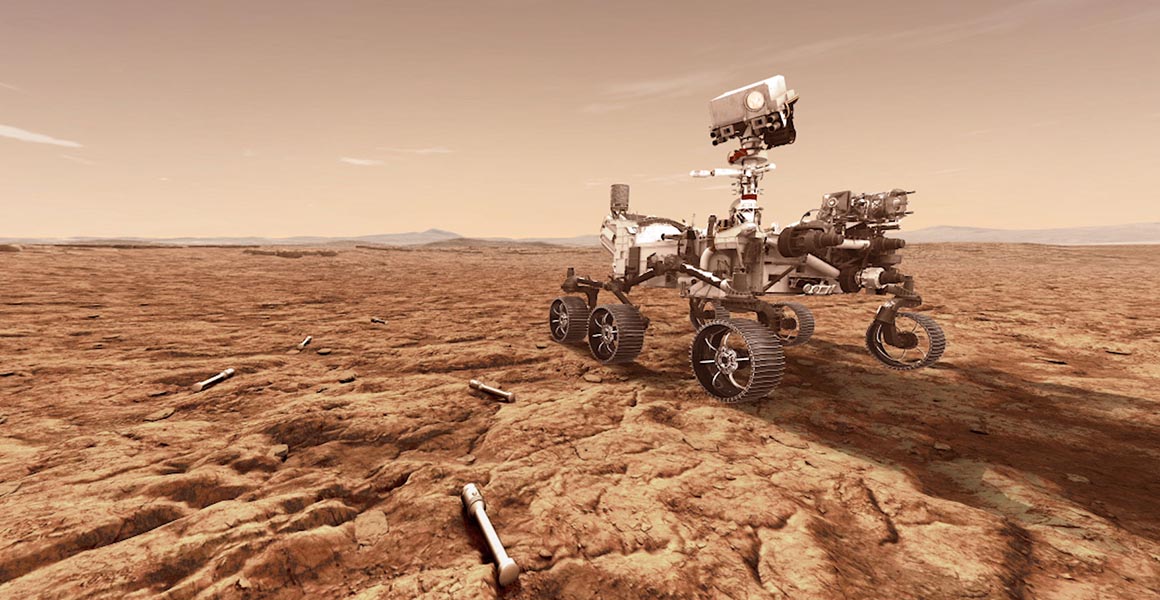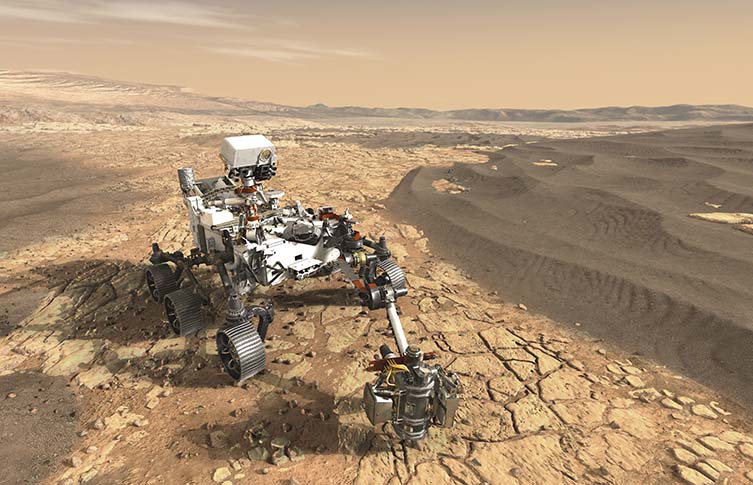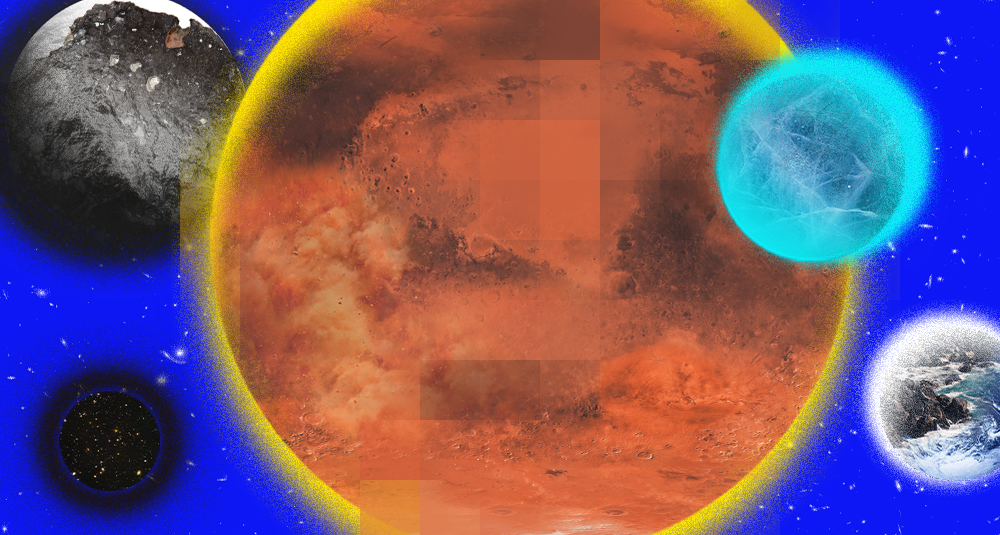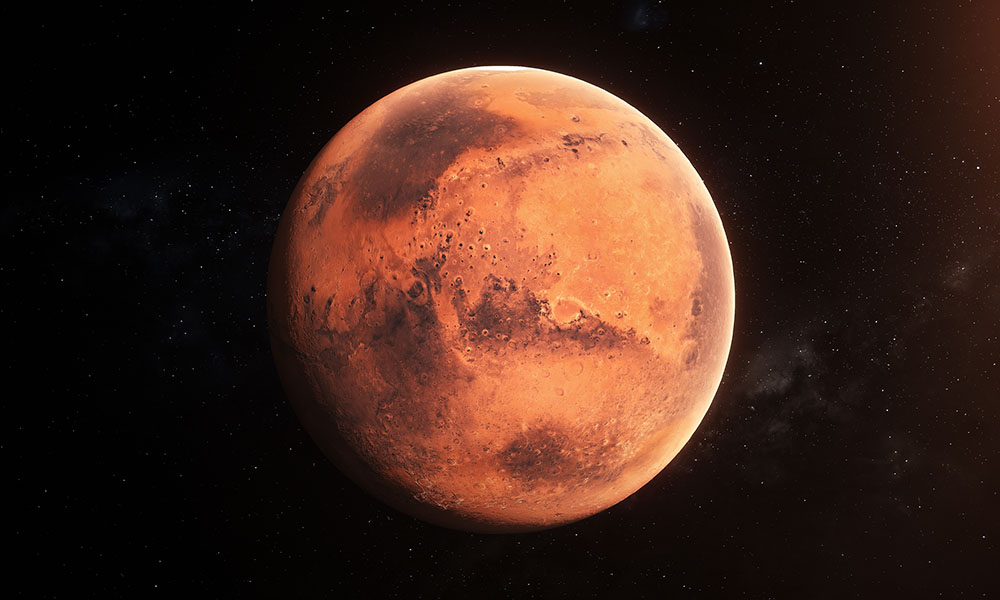In July NASA will launch a new rover headed for Mars.
It is due to land on the red planet in 2021, but where will the Mars Perseverance rover land, what will the rover be doing, and what are scientists expecting it to find?

The Perseverance rover heading for Mars will collect rock samples of interest and then leave them to be returned to Earth at a later date © NASA
In July NASA will launch a new rover headed for Mars.
It is due to land on the red planet in 2021, but where will the Mars Perseverance rover land, what will the rover be doing, and what are scientists expecting it to find?
The Mars 2020 mission is NASA's first major return to the red planet since it sent the Curiosity rover in 2011, and the Museum is involved with this new mission in a number of ways.
Prof Caroline Smith is the Head of Collections for Earth Sciences at the Museum. She is also part of the Mars 2020 mission that will search the red planet for organic molecules, which could be key in figuring out whether life has – or, possibly, still does - exist on Mars.
'What I think is particularly exciting about the mission is that it is the first step in the plans for aninternational campaign for a possible Mars sample return,' explains Caroline. 'This is to collect samples on Mars and then hopefully, at some point in the future, return them to Earth.
'I am on the science team for the mission, but I am also on a joint NASA and ESA scientific group which is looking at how we will curate and manage the samples if they come back to Earth.
'In addition to that, a piece of one of the Museum's Martian meteorites is actually going back to Mars on the rover.'
Caroline talks us through some of the key aspects of the mission.

Mars has long been on interest in the search for extraterrestrial life because we know that it once had seas of liquid water covering its surface © NASA
The Mars 2020 mission has a number of aims and components.
It includes a new rover, named Perseverance, and for the first time ever will be taking a small helicopter to Mars called Ingenuity.
'The Perseverance rover itself is based on the previous rover Curiosity, which is driving around Mars right now and sending back scientific data,' says Caroline. 'It is very similar in design, but has a different set of payloads. These are the scientific instruments on the rover that do the different types of tests.'
These include one instrument called SuperCam, which is able to not only produce images but also analyse the chemical composition and mineralogy of the rocks. It does this by shooting out a laser beam, then using a special camera to measure the wavelength of light emitted from this laser 'zap' when it hits the rock.

The different payloads on the Perseverance rover will help it to analyse the rocks and mineralogy of the planet down to chemicals and elements that are present © NASA
This will be used in conjunction with another of the payloads known as the Planetary Instrument for X-ray Lithochemistry, or PIXL. It is a very powerful microscope and system which will allow fine-scale analysis of what chemical elements are found in the Martian rocks.
The payload which Caroline will be working with is the Scanning Habitable Environments with Raman & Luminescence for Organics and Chemicals, or SHERLOC. 'This looks at the composition of minerals, but it also it tries to find any organic molecules,' explains Caroline. 'That is very interesting because the presence or certain organic signatures could indicate the presence of past or present life.'
Perseverance will also be carrying the Mars Oxygen In-Situ Resource Utilization Experiment (MOXIE). This piece of equipment will test to see how feasible it is to produce oxygen from carbon dioxide and Martian rocks, before the first humans step foot on the planet.
Finally, there will be Mastcam-Z to take panoramic and stereoscopic images with the ability to zoom in on them; the Mars Environmental Dynamics Analyzer (MEDA) to measure the temperature, wind speed and direction, pressure, relative humidity, and dust size and shape, and the Radar Imager for Mars' Subsurface Experiment (RIMFAX) to peer beneath the surface the planet.

The Mars 2020 mission will also take the first helicopter, Ingenuity, to Mars © NASA
Ingenuity, on the other hand, is more of a technical demonstration. This will be the first time that anyone has attempted to fly an aircraft on another planet.
It is a helicopter with four carbon fibre blades which will spin eight times faster than would be needed on Earth. This is because the atmosphere on Mars is much thinner than it is here, at just 1% of the density.
Ingenuity has no scientific experiments on board, as it is a test flight.
When a scientific instrument is used carry out experiments, it first needs to be calibrated. This is done by running the tests on an sample which has already been measured and is well-understood. The results from the new analysis can be compared to see that the instrument is working properly and so the data from the new sample is reliable.
This is what will need to be done when Perseverance lands on Mars.

Through the use of satellite and rover imagery, researchers are able to get a good idea of the type of rocks found on Mars and so can work out how they were formed © NASA
'It is always good for your calibration material to be as similar as possible to the unknown that you are measuring,' says Caroline. 'We discussed which different types of rock could be used for the SHERLOC Calibration Target on the rover, and actually we decided that the best type of material would be basalt, which is ubiquitous on Mars.
'Then we had to think about what type of basalt, because Martian basalts are a bit different in composition to Earth basalts. That is how we arrived on the idea to use a Martian meteorite. This will be the similar to the rocks that we're actually expecting to analyse.'
The particular meteorite was chosen because it is incredibly tough and robust and most likely to survive not only the trip to Mars, but also the landing.
It is almost impossible for any remote vehicle to definitively confirm the presence of life on Mars, which is one of the main reasons a sample return mission is needed. But there are still various signs that the rover will be looking out for.
'Perseverance is looking for the key indicators of life,' explains Caroline. 'These are textures, structures and morphologies in the rocks, but also the chemical evidence including the presence of different organic molecules.

The rover has to be built in sterile conditions to prevent accidentally taking Earth life to Mars with it © NASA
'All of the different instruments onboard in combination give us a good way to look at the rocks, see what is in them, see what they are made of, and then actually see if there is any evidence of anything that looks interesting in terms of life detection.'
The rover will then be used to select the rock samples that look the most promising, before leaving them to be collected at a later date. When they return to Earth will we have a clearer idea of what may or may not have been found by the rover.
'I don't want to say that yes, Mars definitely generated life, but I think there is a pretty reasonable chance,' Caroline says. 'I think we are increasingly understanding that early in its history, Mars probably had an environment that was very conducive to life, and I think it is a reasonable enough chance to warrant going and looking.
'That is one of the things that is so exciting about this mission. Some of the things that have been detected on Mars with some of the other missions are quite curious, and potentially could be signs that there was life on Mars or indeed that there is life on there now.'

By looking at the chemistry of the rocks on Mars, Caroline and her colleagues are hoping to see if they can find any organic molecules © NASA
The landing site for the Mars 2020 mission will be a place known as the Jezero Crater.
The site was selected in November 2018 because its geology makes it a prime target for the search for evidence of past or present life.
'We have a reasonable idea of the rocks in Jezero Crater, but as always you never really know until you get there,' explains Caroline.
'There are rocks that we think were laid down in a river delta, while some of the other rocks may have been hydrothermally altered. There are also some rocks that we think could be related to a large impact nearby, and also some volcanic rocks.'
This gives the scientists a wide range of rock types to study.

The Jezero crater was chosen as the landing site as it shows evidence that there was once a river delta flowing into a lake © NASA
For the search for life, most interest is likely to be placed on rocks that were laid down in what is believed to have been a river delta feeding into a lake found within the crater. Satellite imagery shows that these regions are rich in clays.
More significantly still, it is thought that the lake within the crater was long-lived and did not dry up, giving it one of the best chances to have supported life in the past.
The Mars 2020 mission is scheduled to launch between 30 July and 15 August 2020 from Cape Canaveral, Florida. It will then take roughly seven months to travel to Mars, hopefully arriving at the red planet on 18 February 2021.
The rover is then expected to complete its main missions within a single Martian year, around 687 Earth days.
After this, it is hoped that the rover will continue to explore the Martian surface and send back data for as long as it continues to operate. This could be for a significant amount of time, as when Curiosity rover touched down in 2012 it was planned to last for two years but is still going strong eight years later.

The Mars 2020 mission is the first step in a sample return, to bring any interesting rocks back to Earth © NASA
While the rover continues to go about its scientific exploration, back on Earth things will be in full swing for the next few stages of the anticipated sample return campaign.
'There are actually going to be three steps before the samples come back,' explains Caroline. 'The first designs for the sample fetch rover are being supplied by the ESA at the moment, but it is extremely complicated.
'It is a very technically as well as scientifically challenging thing to do, which is why it is being broken up into stages and is an international endeavour.'
The current working timeline will see the samples collected and stored by Perseverance not coming back to Earth until around 2031.

Discover more about the natural world beyond Earth's stratosphere.

Find out in our latest exhibition! Snap a selfie with a piece of Mars, touch a fragment of the Moon and lay your hands on a meteorite older than our planet.
Open now

Explore the red planet from the comfort of Earth in our new online course.
Don't miss a thing
Receive email updates about our news, science, exhibitions, events, products, services and fundraising activities. We may occasionally include third-party content from our corporate partners and other museums. We will not share your personal details with these third parties. You must be over the age of 13. Privacy notice.
Follow us on social media